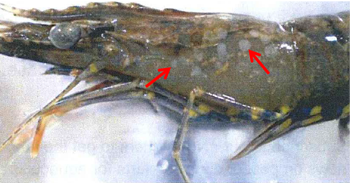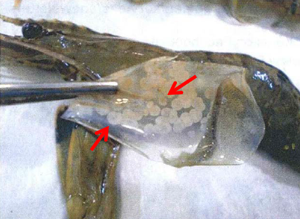The Department of Primary Industries and Regional Development has partially eased its White Spot Syndrome Virus import requirements for Western Australia, to allow the import of more live and uncooked crustaceans from a larger area of the east coast of Australia.
The import changes are designed to protect WA from potential disease carriers from interstate, whilst enabling low risk products to enter. This follows surveillance of farmed and wild prawns for White Spot by authorities in Queensland and New South Wales.
White Spot is a highly contagious virus that affects farmed and wild crustaceans including prawns, crabs and lobsters. The virus does not pose a threat to human health or food safety.
In December 2016, White Spot caused high rates of stock mortality on seven prawn farms in South East Queensland. The farms have since been destocked and decontaminated and will now lay fallow for a year to assist with eradication of the virus.
White Spot did not occur in Western Australian wild or farmed prawns.
A significant change to WA’s import requirements is a reduction in the restricted area back to South East Queensland allowing the import of all live and uncooked wild crustaceans, including bait prawns, from NSW and a wider area of Queensland. There are still restrictions in place for import of prawns from the restricted area in Queensland (see map).
Wild crustaceans from the rest of Queensland can be imported by WA-approved businesses able to meet capture and processing requirements. Farmed prawns from Queensland and New South Wales can be imported if tests are negative for the White Spot virus.
The new requirements also allow for wild crustaceans from South East Queensland to again be imported into WA if they’ve been treated with gamma irradiation. The gamma irradiation kills to White Spot virus and this is a newly developed option to assist the bait prawn industry.
Cooking destroys the virus, so all cooked products continue to be able to be imported into WA.
Aquatic Biosecurity Compliance Manager Brad Tilley said the changed import requirements remained a precautionary measure, an approach that has served WA well during this outbreak. The requirements will be subject to review as new information becomes available.
“These updated requirements further support the seafood industry, by permitting more bait and seafood supplies into WA, and continue to support the White Spot management work being done in Queensland and locally to reduce the risk of the virus entering WA,” Mr Tilley said.
“Importers are encouraged to check the requirements on the department’s website.”
Due to the serious impact of White Spot and its ability to spread easily, people fishing or crabbing in WA have a critical role in preventing the spread of this virus by doing the following:
All seafood for human consumption, especially imported raw prawns, should not be used as bait as they may carry and introduce viruses to our waterways and have impacts on both farmed and wild prawns and other crustaceans.
Check your bait to make sure the prawns you use are Australian wild-caught from a quality, trusted bait supplier, or catch your own in your local area.
Don’t dispose of crustacean waste including heads and shells in, or near, waterways.
Uncooked prawns and other seafood purchased from the supermarket or fishmonger are meant for human consumption only and must not be used as bait.

Prawns with White Spot may have a loose shell with numerous white spots on the inside surface of the shell and a pink to red discolouration. Photos: Queensland Department of Agriculture and Fisheries.
Fishers should also check their bait prawns or other crustaceans for signs of White Spot and any thought to have the disease should be retained and immediately reported to the FishWatch hotline on 1800 815 507, which operates 24-hours a day.
More information about White Spot Syndrome Virus can be found here.